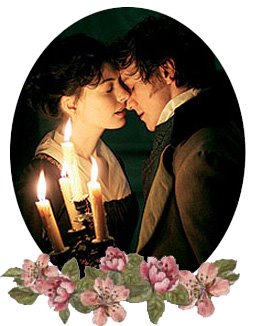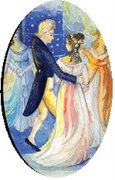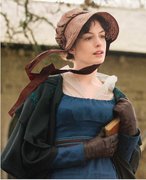Jane Austen's Juvenilia
Volume 1 (written between 1787 and 1790) contains; ‘Frederic and Elfrida: A Novel’, ‘Jack and Alice: A Novel’, ‘Edgar and Emma: A Tale’, ‘Henry and Eliza: A Novel’, ‘The Adventures of Mr. Harley’, ‘Sir William Montague’, ‘Memoirs of Mr. Clifford: An Unfinished Tale’, ‘The Beautifull Cassandra’, ‘Amelia Webster’, ‘The Visit: A Comedy in Two Acts’, ‘The Mystery: An Unfinished Comedy’, ‘The Three Sisters’, ‘Detached Pieces’ and ‘Ode to Pity.’
Volume 2 (written between 1790 and 1792) contains; ‘Love and Freindship’, ‘The History of England’, ‘Lesley Castle’, ‘Collection of Letters’ and ‘Scraps’.
Volume 3 contains; ‘Evelyn’ and ‘Catharine.’
Jane Austen’s collection of Juvenilia equates to over 90,000 words which was composed in approximately 6 years. The Juvenilia presents pure human passions. She displays themes of murder, gluttony, drunkenness and many more with little subtlety, something in which she masters in her more mature novels. This honest approach is very positive as it illustrates that Jane Austen could observe and interpret human behaviour at its most natural and translate this into writing.
Love and Freindship.
Love and Freindship (intentional misspelling; one of many in the story) was completed in June 1970 when Jane Austen was just 14 years old. It is thought that this story was written for the purpose of entertaining the Austen family during nightly readings.
The entire piece is written in the form of letters from Laura to Marianne. Marianne is the daughter of Laura’s friend Isabel. The main characters are very overtly emotional and this takes over any sense; they dislike anyone who do not show their romantic sensibilities: "They said he was sensible, well informed, and agreeable; we did not pretend to judge of such trifles, but ... we were convinced he had no soul.” The story evolves with a young noble gentleman arriving and asking for Laura’s hand in marriage. It seems that their future will be one of happiness and good fortune. After his family announces their rejection of Laura as his bride, however, Laura must overcome a series of events….but not without signs of delirium in her journey. Also in the story a rich widow, Phillipa, marries a younger man who is considered to be seeking money and therefore returns her affections. In Jon Spence’s biography, ‘Becoming Jane Austen’, he speculates that this may be recognizing the position that Jane’s brother, Henry, was in at this time; Eliza De Feuillide was much older and very wealthy and Henry was not. Spence also states that he believes Love and Freindship to be a warning to Eliza to leave Henry alone.
The History o
 f England
f EnglandJane Austen completed The History of England on November 26th 1791 when she was 16 years old; this coincided with her brother, Charles, leaving home to go to the Royal Navy Academy, following the footsteps of their brother Frank.
Lesley Castle
This unfinished novel consists of ten letters and is not included in the Penguin edition of her juvenilia; instead it is presented with The History of England, and Catharine.
Lesley Castle has a gothic feel to it; perhaps a precursor to her creation of Northanger Abbey. Many
 humorous characters are presented who are largely superficial, allowing Jane Austen to demonstrate her famous wit at their expense. The main characters are Miss Margaret Lesley and Miss Charlotte Lutterell and they correspond through a series of letters, unveiling their deepest secrets to each other. There are numerous, consecutive plots, each allowing these characters to portray their naivety and lack of knowledge on such matters as adultery and elopement. For example, the manipulative Louisa Lesley deceives a man into thinking that she is kind and so he marries her and they have a child. Louisa then abandons husband and child to run away with her lover.
humorous characters are presented who are largely superficial, allowing Jane Austen to demonstrate her famous wit at their expense. The main characters are Miss Margaret Lesley and Miss Charlotte Lutterell and they correspond through a series of letters, unveiling their deepest secrets to each other. There are numerous, consecutive plots, each allowing these characters to portray their naivety and lack of knowledge on such matters as adultery and elopement. For example, the manipulative Louisa Lesley deceives a man into thinking that she is kind and so he marries her and they have a child. Louisa then abandons husband and child to run away with her lover. The many, varied subplots, e.g. a fatal riding accident and the exploration of the theme of marriage with age difference, means that this story could have easily been extended to a larger novel. Jane Austen proves herself to be a comic genius whilst dealing with some very serious issues. She dedicated Lesley Castle to her brother Henry.
A Collection of Letters
Catharine or The Bower is far more than a juvenile piece of writing. It is dated August 1792 on its last page. Jane Austen has attempted something much more serious and many reviewers feel that it highlights a significant turning point in her development as a writer. It may be that Jane is dwelling on her own life and what it is and could be when she began writing Catharine.
The bower is relevant as Catharine contributed to its construction when she was a child and at age 16 she experienced her first kiss (on the hand) here; this infers that the bower is symbolic of female sexuality. This sexual innuendo is explored and the bower is described as ‘a licensed site of prepubescent homosociality which borders on homoeroticism’ (p.37).
Pic 1: Famous silhouette of Jane Austen
Pic 2: Henry IV illustration. Taken from www.penelope.uchicago.edu/austen/austen.html
Pic 3: The cover of Lesley Castle. Taken from http://www.amazon.co.uk/













































4 comments:
Wonderful post. Thank you for this extensive study of Jane's Juvenilia.
Thanks, Ms Place! The credit goes to Rachel; she did the research amazingly and found the facts I would have missed. I don't think that I will have time to read Austen's juvenilia soon, but I will make time for it now.
Thank you Ms Place. I feel very rewarded in researching for this post as I now appreciate even more how utterly talented she was to have written this material at such a young age.
Jane Austen's Juvenilia are misnamed as the earliest are the work of a 27 year old writer. They were all written by Jane Austen's cousin Eliza de Feuillide during her frequent stays at Jane Austen's house in Steventon in the late 1780s and early 1790s. George Holbert Tucker in his book "Jane Austen the Woman" shows from its references to regency bonnets that "Catharine, or the Bower" was begun at the time of the Regency crisis in 1788-89. At this time Jane Austen was only thirteen and had only had two years basic primary school education. "Catharine, or the Bower" is an extremely sophisticated novel and therefore could only have been written by the highly educated Eliza de Feuillide, as I show in my book "Jane Austen - a New Revelation".
Post a Comment